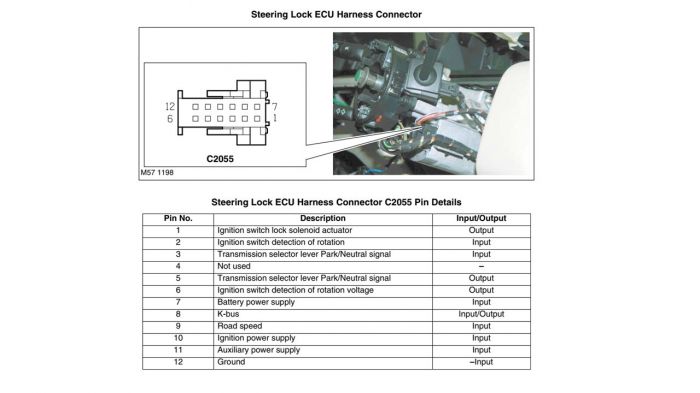| Key won't turn in ignition. SCL / ESL / ELV emulator solved. | |
Just solved the dreaded key won’t turn in ignition problem in my 2006 L322 with the ESL emulator.
Cause as described elsewhere is likely the locking pin actuator in the steering lock ECU not disengaging – hence preventing the steering lock coming on. Fortunate as this leaves the car driveable, but if the immobilisation ECU does not see a lock confirmed signal from the former ECU when you take the key out it will not allow the key to turn again.
Test to confirm you have the same issue:
Remove and reconnect Fuse 18 (power to steering lock and immobiliser ECUs) allows starts till key taken out.
Remove and reconnect steering lock harness connector (power to steering lock ECU only) allows starts till key taken out.
I bought the Range Rover SCL / ESL / ELV emulator from the first of the following sites:
Pay in Dollars: http://cartools.lv/Shop/product_info.php?c...ucts_id=32
Pay in Euros: http://www.ecuvonix.com/range-rover-sclesl...-2934.html
(I think it only works till 2006 despite what the first website says).
They both seem to come from the same source and their response to requests for technical support is similarly monosyllabic and cryptic.
My experience was as follows:
With key out:
Disconnect connector C2055. Plug emulator into connector. Key will now turn but engine will not start. Reason – the Park/Neutral signal coming in at pin 3 is not being output by emulator to pin 5 as it is in the real ECU. Solution- solder a wire between pins 3 and 5 on emulator (see reverse of circuit board for identification of pin 1). Plug emulator back in – key turns, engine starts, happy days.
Steering lock motor now has no power so my assumption is it cannot now go on. Further as the fuse in and out trick works then this must be because the hall effect sensor has confirmed that the safety release solenoid actuator locking pin is fully in – anyone disagree with this logic.
“When a valid key is inserted and confirmed, the steering lock ECU activates the steering lock motor in the unlock direction. Movement from the locked to the unlocked position is detected by the Hall sensor in the motor and sensed by the steering lock ECU. When the Hall sensor detects that the unlocked position has been reached, the ECU brakes the motor. The safety release solenoid actuator is de-energised and its spring loaded pin drops into a recess in the locking bolt. This forms a mechanical lock securing the locking bolt in the unlocked position preventing the steering lock from being applied when the vehicle is being operated. A Hall sensor in the safety release solenoid actuator informs the steering lock ECU of this condition. Once the unlocking procedure is successfully performed, the steering lock ECU de-energises the steering lock motor. Once the steering is successfully unlocked, the ignition switch lock disengages allowing the key to be turned to positions II and III.”
|









![]()



